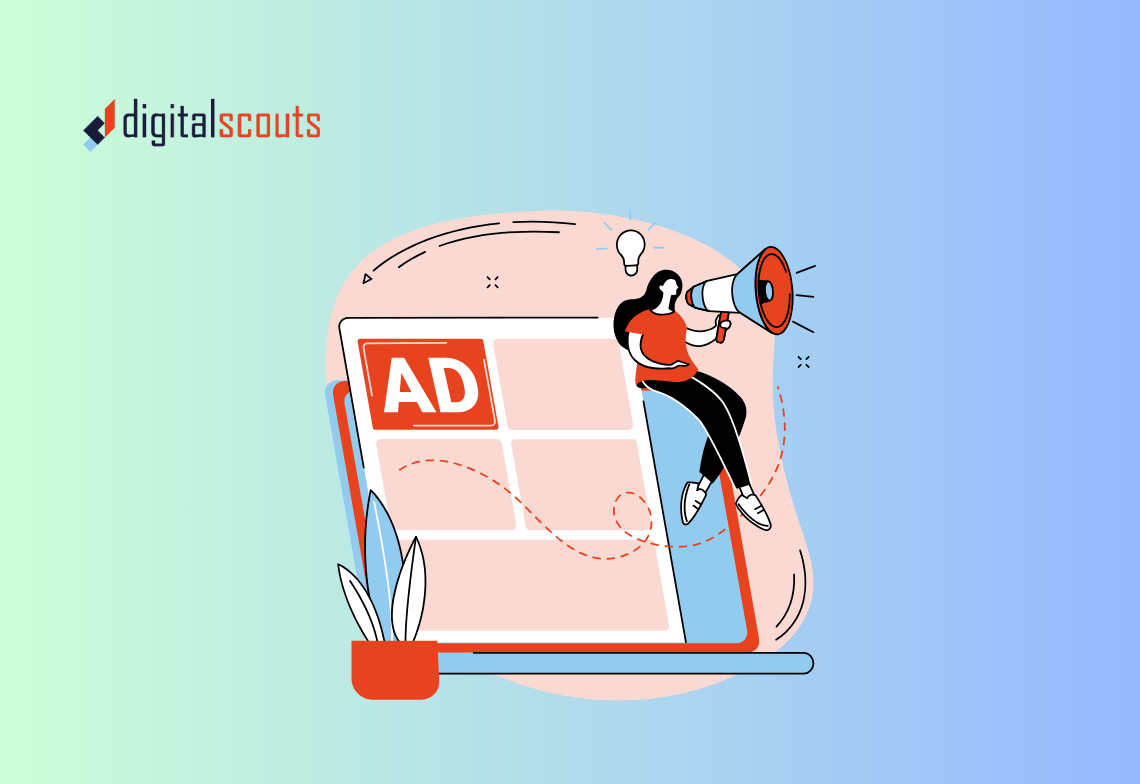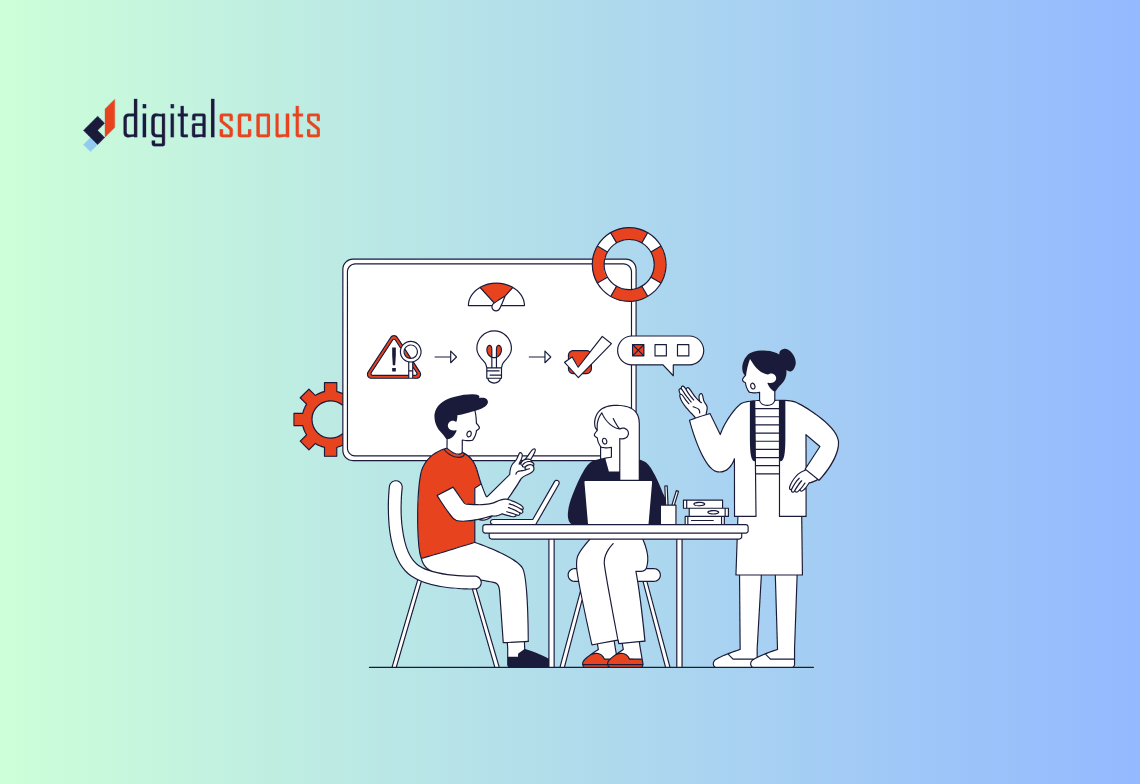Most B2B companies do not have a lead problem. They have a pipeline problem.
Leads are easy to collect. Demand is what drives real growth. A consistent, measurable demand generation engine helps you attract the right audience, nurture them effectively, and turn awareness into predictable revenue.
In this guide, we will break down how to build a sustainable demand generation strategy step by step. You will learn how to connect marketing, sales, and operations into one engine that drives long-term pipeline growth.
What Is B2B Demand Generation
B2B demand generation is the process of creating awareness and interest in your product or service among your target audience before they are ready to buy.
It is not just about collecting leads. It is about building trust and intent, so when a buyer is ready, your brand is the obvious choice.
A well-built demand generation engine combines content, paid media, email, social, and automation to attract, educate, and convert buyers over time.
Why it matters
-
Builds brand credibility and authority
-
Fills the top of your funnel with qualified prospects
-
Creates consistent, measurable revenue impact
-
Aligns marketing, sales, and operations through shared KPIs
In short, demand generation is not about chasing leads. It is about creating the conditions for growth.
The RevOps Foundation of Demand Generation
At its core, demand generation is a Revenue Operations (RevOps) function.
RevOps connects the tools, data, and processes that power your go-to-market system. By aligning marketing, sales, and customer success, RevOps ensures that demand generation efforts directly support pipeline and revenue.
What this alignment looks like
-
Shared lifecycle stages and definitions
-
Unified CRM and data systems such as HubSpot
-
Automated workflows between marketing and sales
-
Common KPIs like lead-to-opportunity conversion rate and pipeline velocity
When RevOps and demand generation work together, every marketing activity can be tracked, measured, and tied back to revenue.
Step 1: Define Your Ideal Customer Profile
Every strong demand engine begins with a clear Ideal Customer Profile (ICP).
An ICP defines who your most valuable customers are, what problems they face, and why your solution fits.
How to create your ICP
-
Review existing customer data and identify common traits of your best clients.
-
Map firmographic factors such as company size, industry, and location.
-
Understand the key roles involved in the buying process.
-
Identify pain points that your product solves.
Your ICP should guide everything — from ad targeting to content creation and lead scoring. Without this clarity, demand generation becomes guesswork.
Step 2: Align on Buyer Journey and Lifecycle Stages
Once you know who you are targeting, map how they move from awareness to purchase.
Typical B2B buyer stages
-
Awareness
-
Consideration
-
Decision
-
Adoption
-
Retention
Align lifecycle stages in your CRM
Use consistent definitions across marketing and sales such as:
-
Lead
-
Marketing Qualified Lead (MQL)
-
Sales Qualified Lead (SQL)
-
Opportunity
-
Customer
When everyone speaks the same language, handoffs between teams become seamless and measurable.
Step 3: Build the Right Demand Generation Channels
Your demand engine needs multiple connected channels working together.
Key B2B demand generation channels
-
Content marketing: Publish high-quality blogs, guides, and videos that solve real problems.
-
Paid media: Use LinkedIn, Google Ads, and retargeting to amplify visibility.
-
Email nurture: Build automated workflows that move leads through the funnel.
-
Social engagement: Share thought leadership and insights that demonstrate authority.
-
Webinars and events: Use educational sessions to connect with decision-makers.
Each channel supports a different stage of the buyer journey. Together, they create momentum that feeds the pipeline consistently.
Step 4: Develop a Content Strategy That Creates Demand
Content is the fuel that powers your demand engine.
How to structure your content strategy
-
Awareness stage: Create educational content that helps your audience define their challenges. Examples include blog posts, videos, and reports.
-
Consideration stage: Share solution-focused content like case studies, webinars, and comparison guides.
-
Decision stage: Offer demos, pricing information, and ROI calculators.
AEO-friendly content
Use clear structure and language that answer common questions directly. For example:
-
What is B2B demand generation
-
How does demand generation support sales growth
-
What metrics should I track for demand generation
This question-based format improves visibility in AI search results and helps readers find answers faster.
Step 5: Connect Your Systems and Data
Your demand generation engine will only perform if the data behind it is connected and reliable.
Key integrations to set up
-
Marketing automation (HubSpot or similar)
-
CRM with full lead lifecycle tracking
-
Analytics and attribution platforms
-
Advertising and social platforms
When marketing and sales tools talk to each other, you can see which campaigns drive real pipeline and optimise for results.
Digitalscouts often helps B2B teams design connected systems that automatically capture, score, and route leads from the first touchpoint to closed revenue.
Step 6: Use Lead Scoring and Qualification
Not every lead should go to sales right away. Lead scoring helps prioritise high-intent contacts based on their engagement and fit.
How to set up lead scoring
-
Assign points for behaviours like website visits, downloads, or webinar attendance.
-
Add or subtract points based on firmographic fit or disqualifying signals.
-
Set thresholds that automatically move contacts from MQL to SQL.
Why it matters
Lead scoring ensures that sales spends time on the best opportunities while marketing continues nurturing the rest. It is the foundation of an efficient, scalable demand engine.
Step 7: Design an Automated Nurture Flow
Once leads enter your system, nurture them with relevant and timely communication.
How to build effective nurture workflows
-
Segment by lifecycle stage, industry, or persona.
-
Send educational content that matches each buyer stage.
-
Use behavioural triggers like “visited pricing page” or “opened demo email.”
-
Personalise subject lines and CTAs using smart content.
Automation ensures consistency, while personalisation increases engagement. Together, they move leads through the funnel without extra manual effort.
Step 8: Align Marketing and Sales Handoffs
A demand generation engine fails when marketing and sales are disconnected.
How to create alignment
-
Document when and how leads move from marketing to sales.
-
Set expectations for follow-up timing.
-
Track performance of each handoff in your CRM.
-
Regularly review lead quality and feedback between teams.
Example
Marketing generates 100 MQLs per month. Sales follows up within 24 hours. Each quarter, both teams meet to review conversion rates and refine scoring rules.
This rhythm keeps your demand engine predictable and performance-driven.
Step 9: Define Key KPIs and Reporting
A demand generation strategy is only as strong as the data that measures it.
Core demand generation KPIs
-
Lead to MQL conversion rate
-
MQL to SQL conversion rate
-
Cost per lead and cost per opportunity
-
Pipeline contribution by channel
-
Customer acquisition cost (CAC)
-
Return on marketing investment (ROMI)
Use shared dashboards in HubSpot or your CRM to track these metrics across departments.
Digitalscouts helps clients build RevOps dashboards that connect marketing activity with sales outcomes, so leadership can see the full revenue picture in one place.
Step 10: Scale and Optimise
Once your demand generation engine is running, continuous optimisation keeps it performing.
How to scale effectively
-
Test new channels once core ones are stable.
-
Repurpose top-performing content into multiple formats.
-
Use AI tools for data analysis, content variation, and reporting.
-
Automate repetitive tasks like lead routing and reporting updates.
A healthy demand engine evolves over time. The more you learn about your audience, the better your messaging, targeting, and conversion strategy become.
Common Demand Generation Mistakes
-
Focusing on lead quantity instead of lead quality
-
Running disconnected campaigns without attribution
-
Ignoring post-sale retention in your funnel
-
Neglecting data hygiene and CRM maintenance
-
Treating demand generation as a short-term campaign instead of a continuous process
Avoiding these pitfalls keeps your strategy scalable and sustainable.
Bringing It All Together
Building a B2B demand generation engine is not about running more campaigns. It is about creating a repeatable system that attracts the right audience, builds trust, and converts interest into revenue.
When powered by RevOps alignment, your demand engine becomes measurable, predictable, and efficient. Every team — marketing, sales, and operations — works from one data source and toward one goal.
Digitalscouts helps B2B companies design demand generation systems that connect audience insights, CRM automation, and reporting for full-funnel visibility. We focus on frameworks that build long-term pipeline, not short-term spikes.
If you are ready to build a demand generation engine that drives consistent growth, our team can help you design the strategy, set up the systems, and measure what matters.
Frequently Asked Questions
About Author
Ashish is a B2B growth strategist who helps scaleups align marketing and sales through Account-Based Marketing (ABM), RevOps, and automation. At DigitalScouts, he builds scalable content engines, streamlines lead flows with HubSpot, and runs targeted GTM programs to drive predictable pipeline. He regularly shares insights on using AI and automation to power ABM and accelerate complex buyer journeys.








